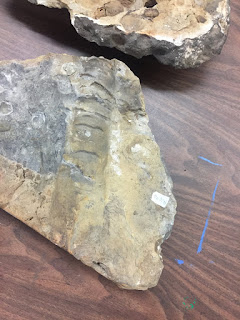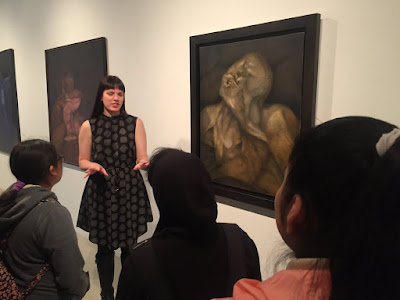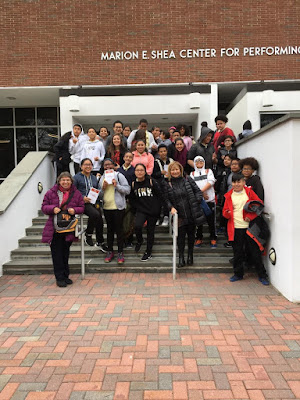At New Roberto Clemente School recently two teachers, Mr. Segovia, bilingual science teacher, and Ms. Aramayo, art teacher, collaborated on an art/science project designed for their bilingual students. Paterson Public Schools has over 4000 English Language Learners. LINK.
At the time of this collaboration Mr. Segovia was teaching his 6th grade students about electrical circuits in both English and Spanish. This is Unit 3 of the District-wide science curriculum LINK. Ms. Aramayo was teaching drawing and painting to her 6th grade students. This is Unit 1 and Unit 3 of the District-wide fine arts curriculum LINK LINK.
The two teachers decided to collaborate. This new lesson combined learning objectives in both areas: science and fine arts.
Above: Shared learning objectives for a collaborative science/art lesson taught
to bilingual students at NRC.
First Mr. Segovia discussed electrical circuits from a scientific point of view. He asked students, "What is required to complete a circuit?" He used teaching resources from the Grade 6 Unit 3 Foss Electromagnetic Forces used in the Paterson Public Schools District-wide Science Curriculum LINK
Above: Mr. Segovia teaches circuits to NRC 6th grade students
Next, Mr. Segovia demonstrated paper circuit making using materials from Makerspace purchased for the classroom with funds from the Geraldine R. Dodge Arts Integration grant. These art/science materials are now available in both classrooms, art and science. He used both English and Spanish to teach this lesson.
Above: Mr. Segovia demonstrates circuit making to NRC 6th grade students
Next Ms. Aramayo showed the students the same students the drawings/paintings were already working on in her art class. She too spoke in English and Spanish.
Ms Aramayo was following the Paterson Public Schools District-wide Fine Arts Curriculum for 6th grade: Grade 6 Unit 1 Drawing and Unit 3 Painting: "From a psychological developmental perspective, sixth graders are beginning to think about who they are, where they come from, and where they are going. In the art studio classroom, sixth graders will explore these ideas and use art materials to express their feelings about these very real philosophical thoughts. They will draw, paint, sculpt clay, and make puppets." LINK LINK
Above: Ms. Aramayo (left) demonstrates to NRC students while her
WPU Practicum Student, Lindsay Karros, (right) looks on
The 6th grade students had drawn detailed images of themselves with their memories and fantasies from their childhoods. Many of these drawings were finished or almost finished. Ms. Aramayo asked students, "Where would you like to add a "light feature" (a paper circuit) to your artwork? Students showed her the precise spot they wanted to see their lights.
Above WPU Art PIR Triada Samaras makes holes for the lights using an exact knife.
Mr. Segovia demonstrated what the light would look like by attaching a battery to the circuit. Ms. Aramayo and Mr. Segovia both used English and Spanish to teach this lesson. The students responded in both languages as well. As the students created their "light" artworks they talked a great deal in both languages, both to each other and to their teachers.
A new English-Spanish vocabulary list emerged from this collaborative lesson emerged with words such as:
circuit circuito
simple circuit circuito simple
parallel circuit circuito paralelo
paper circuit circuit de paper
electricity electricidad
battery batería
postive positivo
negative negativo
electrons electrones
shape forma
line línea
texture textura
light ligero
drawing dibujo
painting pintura
brush cepillo
composition composición
Below is a video they made of the arts integration expereince and its impact on the students as well as their teaching practice:










































